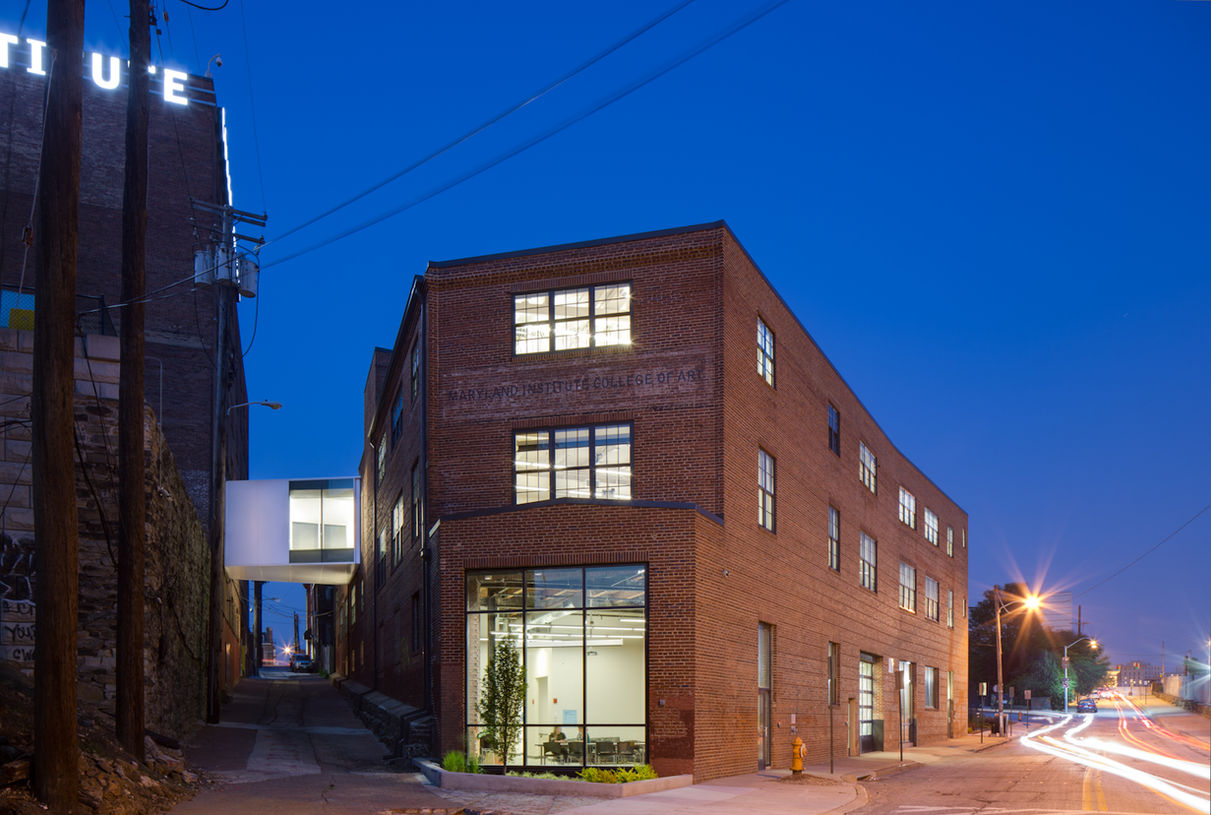Celebrating 40 Years of Architecture with Purpose
Over four decades, the studio’s history reflects steady evolution and a lasting commitment to meaningful work. This timeline offers a view of its legacy and how people, projects, and purpose have shaped the practice as it stands today and the direction it continues to take.
1984-1994: Founding Vision and Civic Foundations
The full-service general practice opened in 1984 under the leadership of Steve Ziger and Craig Hoopes, with Jamie Snead joining soon after. Early work focused on residential and commercial projects, forming the basis of a reputation for thoughtful service and design rigor. As momentum grew, the studio took on more cultural and institutional commissions.


The team grew quickly and by 1989 a team of eleven was celebrated as the Firm of the Month by AIA Baltimore.

The office relocated to 1006 Morton Street in the beginning of 1986 and is still there today.


Design for a private penthouse, Scarlett Place, wins awards and garners national attention for the firm as "Emerging Talent" by Architecture Magazine in 1992.

The studio wins the new Center Stage Head Theater with an innovative design approach that grows the cultural practice.

1995-2004: Expanding Practice and Design Recognition
The late 1990s marked a period of momentum, with major commissions from academic, religious, and cultural institutions expanding the firm’s civic presence. As Craig Hoopes relocated west, Ziger/Snead grew to its largest size, establishing key systems that shaped the future of the practice. In 1996, Charles Brickbauer and Hugh McCormick joined following the closure of Peterson & Brickbauer, enriching the studio’s modernist foundation. Nicole Lamont became Studio Manager in 1997, and future partner Douglas Bothner joined in 2000—both playing key roles in the firm’s evolving operations and design leadership.
Brown Memorial Woodbrook Presbyterian Church earns the first AIA National Award.



The Johns Hopkins Bloomberg School of Public Health, the largest project in the studio's history, took place over ten years with six phases.


2005–2014: Repositioning and Adaptation
This decade marked a transition shaped by economic shifts and new opportunities. As major commissions wrapped up and the Great Recession took hold, the firm focused on nonprofit, cultural, and adaptive reuse work—most notably for Living Classrooms Foundation, Baltimore Design School, and the Center for Parks and People. The studio’s design voice matured, grounded in mission and transformation. Hugh McCormick became a Partner in 2009, Douglas Bothner’s residential work gained recognition, and in 2010, Katelin Etoh joined as Marketing Director to help reposition the practice.


Adaptive reuse of the historic Sugar House Warehouse created a waterfront hub for the Living Classrooms Foundation.


The River House is published in Dwell Magazine.

Hugh McCormick becomes a Partner in 2009, leading prominent projects through his retirement in 2015.


Baltimore Design School garners national attention with a National Trust for Historic Preservation Driehaus Preservation Award and publication in Architectural Record.

VIDEO
2015-2024: A Shared Practice
This decade marked the beginning of new leadership under Douglas Bothner (2015) and Katelin Etoh (2018), advancing a culture of collaboration, integrity, and design excellence. The studio continued to prioritize adaptive reuse, while expanding its reach through larger civic and public projects across new geographies. Jamie Snead retired in 2019 and the firm weathered the Covid pandemic with an increased focus on contemporary residential projects.


Doug Bothner becomes a Partner in 2015 with design leadership across practice areas.

Baltimore Museum of Art completes major renovations including re-opening of the original entrance in time to celebrate 100 Years.


The Center for Parks & People 9-acre campus, complete with a new Green Education Center which travelled to the USGBC Greenbuild Expo.


The early days of studio traditions like the Annual Crab Feast and Fridays at 4.

SNF Parkway Theater on the opening night of the 2017 Maryland Film Festival.


Steve Ziger was elevated to the AIA College of Fellows in 2018 and celebrated with Jamie and Doug at the investiture ceremony.


Slate House is published in Dwell Magazine.


The team and families at an Orioles game and Annual Z|S Crab Feast.

Returning to a renovated studio after working at home for 18 months during the Covid pandemic.
2025– : Designing Forward with Responsibility
The 40th anniversary marks both a celebration of legacy and a turning point for the future. With the retirement of founding partner Steve Ziger, the studio honors four decades of civic commitment while looking ahead. The next chapter builds on established values, expanding design leadership across new regions, embedding inclusivity through the Just 3.0 framework, and advancing environmental responsibility through the Carbon Framework Plan and other initiatives.











































































